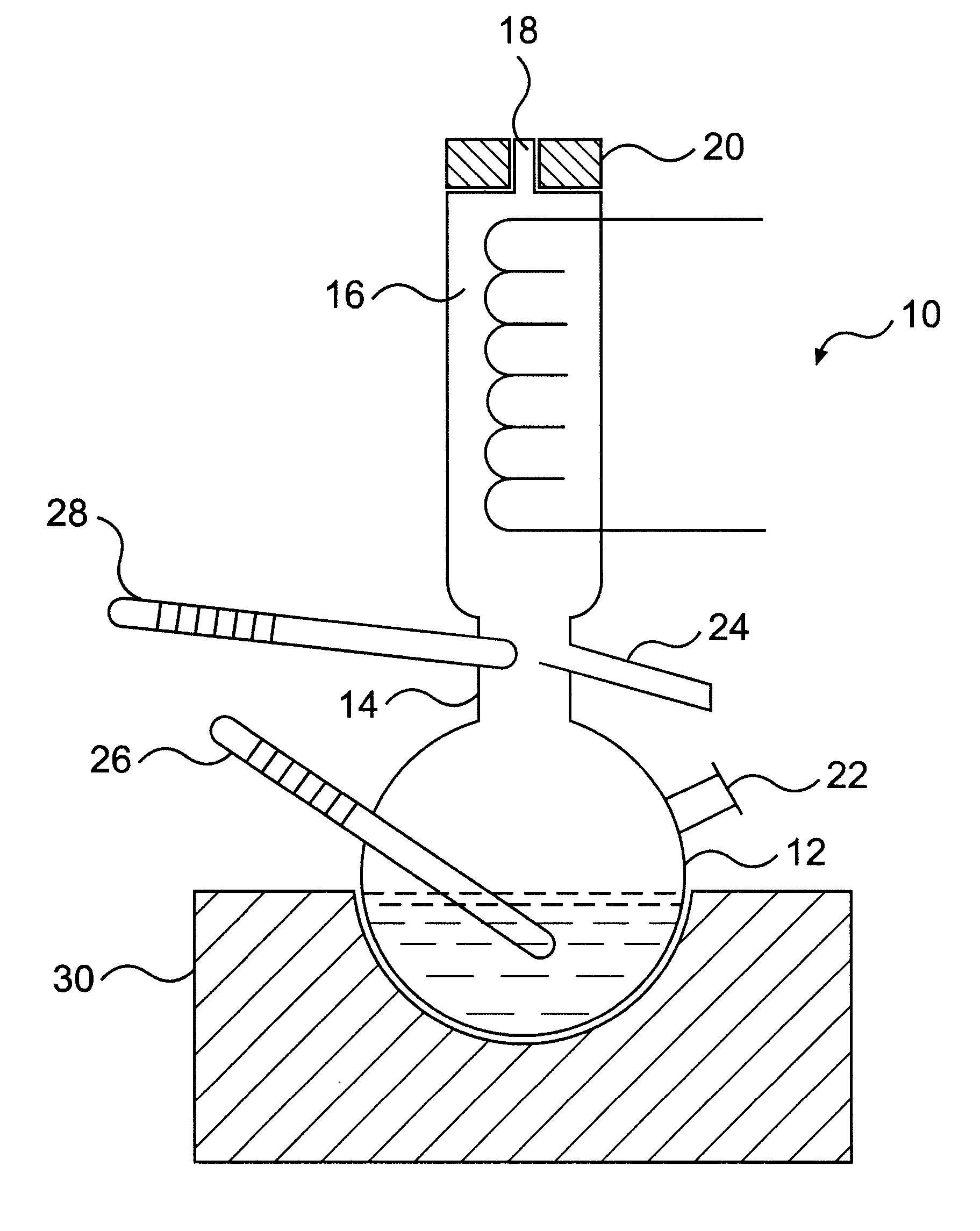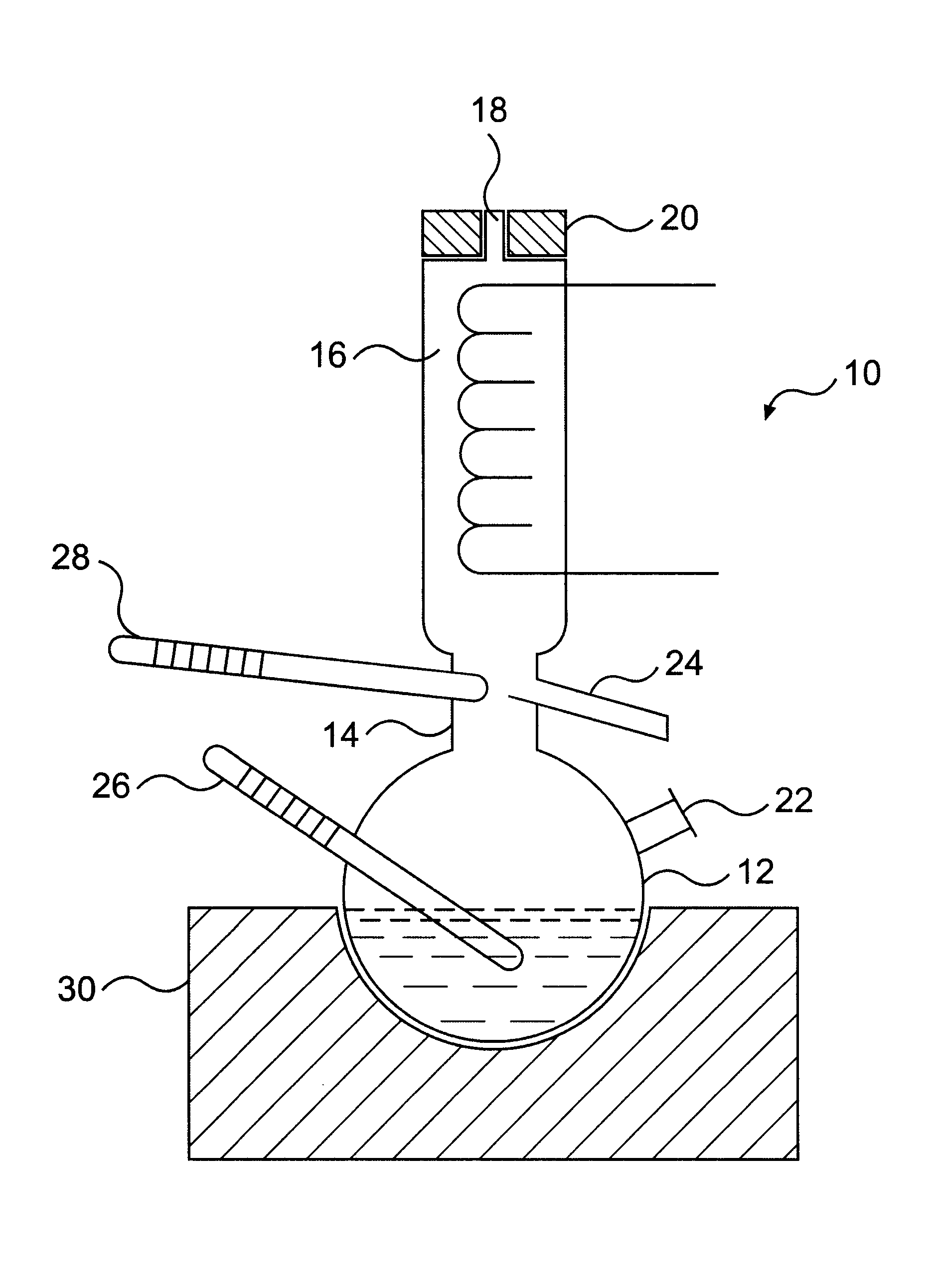Separation of components from methanol mixtures by extractive distillation
a technology of extractive distillation and methanol mixture, which is applied in the separation/purification of carboxylic acid esters, oxygen-containing compound preparation, and process separation, etc., can solve the problems of complex separation of methanol and acetone, and complex separation of methanol and methyl aceta
- Summary
- Abstract
- Description
- Claims
- Application Information
AI Technical Summary
Problems solved by technology
Method used
Image
Examples
experiment 1
A methanol / acetone liquid mixture with a molar ratio of 1.55:1 has a relative volatility of 0.63.
The separation was effected by using a suitable secondary amine as an extractive distillation solvent.
A mixture of methanol (8.1 g), acetone (9.4 g) and N,N'-dimethylethylene diamine (39.5 g) was charged into the flask 12 of the vapour-liquid equilibrium still 10 and the above procedure was applied. The liquid and vapour phases were analysed. The liquid and vapour molar fractions were determined to be as follows:
This translates to a relative volatility of 7.73 for the system methanol / acetone in the ternary system shown above, the methanol being the distillate.
experiment 2
An acetone / methanol mixture with a molar ratio of 1:1 has a relative volatility of 1.4.
The separation was effected by a suitable secondary amine as an extractive distillation solvent.
A mixture of methanol (7.9 g), acetone (14.4 g) and di-butylamine (245.3 g) was charged into the flask 12 of the vapour-liquid equilibrium still 10 and the above procedure was applied. The liquid and vapour phases were analysed. The liquid and vapour molar fractions were is determined to be as follows:
This translates to a relative volatility of 1.88 for the system acetone / methanol in the ternary system shown above, the acetone being the distillate.
experiment 3
A methanol / acetone mixture with a molar ratio of 0.85:1 has a relative volatility of 0.75.
The separation was effected by using a suitable chlorinated hydrocarbon as an extractive distillation solvent.
A mixture of methanol (11.7 g), acetone (24.9 g) and tetrachloroethylene (491.0 g) was charged into the flask 12 of the vapour-liquid equilibrium 10 and the above procedures was applied. The liquid and vapour phases were analysed. The liquid and vapour molar fractions were determined to be as follows:
This translates to a relative volatility of 1.87 for the system methanol / acetone in the ternary system shown above, the methanol being the distillate.
PUM
| Property | Measurement | Unit |
|---|---|---|
| molar ratio | aaaaa | aaaaa |
| molar ratio | aaaaa | aaaaa |
| molar ratio | aaaaa | aaaaa |
Abstract
Description
Claims
Application Information
 Login to View More
Login to View More - R&D
- Intellectual Property
- Life Sciences
- Materials
- Tech Scout
- Unparalleled Data Quality
- Higher Quality Content
- 60% Fewer Hallucinations
Browse by: Latest US Patents, China's latest patents, Technical Efficacy Thesaurus, Application Domain, Technology Topic, Popular Technical Reports.
© 2025 PatSnap. All rights reserved.Legal|Privacy policy|Modern Slavery Act Transparency Statement|Sitemap|About US| Contact US: help@patsnap.com


